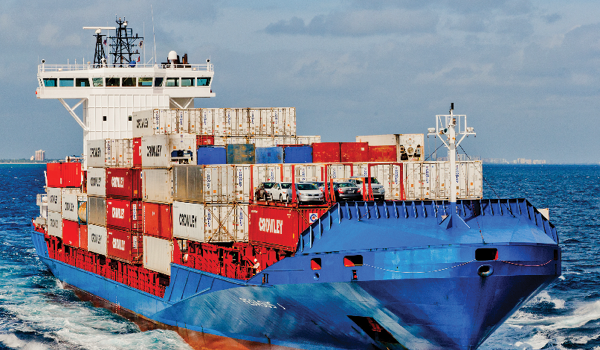August 07, 2019
A flurry of international questions creates doubt among exporters, slowing production and braking nearly a decade of rising cargo volumes.

Images by IT
If it wasn’t clear before, the first half of 2019 made it obvious business doesn’t like uncertainty. As proof, lingering questions about important international issues increased doubt and obscured visibility in ways that contracted trade and weighed on air and maritime cargo. Though second quarter activity did manage mildly positive growth, it marked continued slackening following a decade of steady expansion – a slowing that risks continuing into 2020.
After dismal volumes in April, airfreight rebounded modestly in May and June to bring full Q2 levels to about 2%. Maritime rose by around 3%, though in both sectors the increases were considerably lower than the 5% to 8% levels of recent years.
Comparing results with the same months in 2018, for example, air cargo activity shrank 3.4% in May and 5.6% in April. A similar sag in sea freight has accentuated since late last year, causing earlier forecasts for 2019 to be scaled back. Full-year estimates of 3.7% have been reduced to an optimistic 2% in the skies, and from as high as 4% down to 2.5% in maritime.
Those dipping curves reflect – and indeed result from – similar revisions in global economic outlook, with most international economic organizations cutting 2019 growth estimates. The International Monetary Fund reduced its initial 3.5% figure to 3.3% -- the weakest rise since 2009. It also sliced expectations for global trade expansion from 4% to 3.4%, compared to 3.8% last year. That caution has mirrored surveys of international business managers indicating reduced investment and factory output amid concerns about medium-term trade stability.
Largest among those are US-China tensions that risk spreading to Europe, and the perceived unpredictability of future moves by Washington. China’s Q2 growth, meanwhile, was the lowest in three decades. Risk of conflict in the Persian Gulf -- and disruption of oil shipping – add to the misgivings. Still unresolved conditions of Britain’s European Union exit don’t help, nor do lingering worries of a long-dreaded US economic downturn.
“There’s a lot of doubt, and it’s having serious effects on exporting – especially in and out of Asia,” says Anne-Sophie Fribourg, Sea Freight Procurement Director for Bolloré Logistics in Paris. “Many exporters concerned about the impact of US-China trade tensions advanced deliveries to head off threatened deadlines earlier this year. The result is that stocks may now be full enough for exporters to wait until the situation becomes clearer before increasing volumes.”
In maritime transport, Ms. Fribourg notes, there are additional unknowns about looming rate increases linked to new environmental regulations reducing sulfur emissions next year. “At this point nobody knows how much of the $60 billion cost to shipping companies investing in cleaner technologies will be passed on to clients,” she explains. “That lack of transparency increases the tendency of exporters to wait until details are known before making decisions for the future.”
To offset flagging volumes, sea carriers have begun lowering capacity through blank sailings to maintain rates. Air cargo transporters have cut back available freight space with the same objective. But according to Claude Picciotto, Air Freight Procurement Director for Bolloré Logistics in Paris, those efforts to support rate levels are no replacement for the robust growth in volumes the sector came to rely on for much of the past decade.
“We’re now down to the levels last seen during the 2015 lull, and moves to prop rates up aren’t going to be enough for airlines and cargo companies that need healthy volumes to pay their bills,” says Mr. Picciotto. “It’s hard to see where renewed activity will eventually come from because, apart from luxury goods, virtually all export has tailed off across the board.”
That sluggishness may not be over soon. Rebounds during slower years have often come with peak season surges in mid- to late-summer. That boost has yet to materialize this year.
“We’re seeing very little peak season activity, which is not a very good sign for the months to come,” says Ms. Fribourg. “Without that kind of catalyst, there’s concern this soft spell may extend into next year.”
“Without peak season, the last hope is Christmas,” Mr. Picciotto agrees. “But even if that happens, it wouldn’t resolve the underlying issues that are creating hesitation and doubt in exporters’ minds.”
Reporters
No comments:
Post a Comment